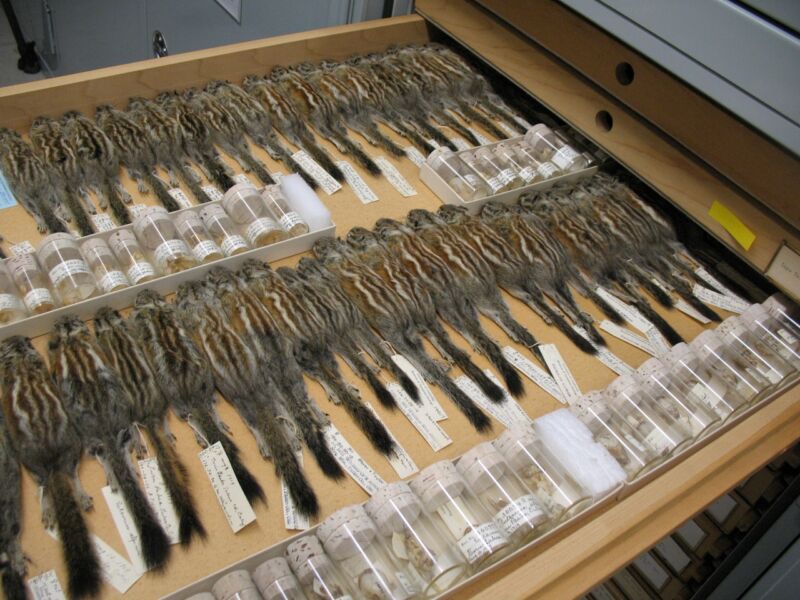
DAOs support the principles of Web3 with all contracts, decisions and transactions publicly viewable and verifiable. Read More

DAOs support the principles of Web3 with all contracts, decisions and transactions publicly viewable and verifiable. Read More

Enlarge (credit: Kazuhiro Nogi | Getty )
Sony expects to supply imaging sensors to 15 of the world’s top 20 global automakers by 2025, underscoring the company’s ambitions for electric vehicles and autonomous driving as it tries to diversify beyond mobile phones.
The Japanese conglomerate flagged its intention to accelerate a push into the auto industry in 2020 when it unveiled a prototype EV called the Vision-S. This year, it has launched an EV division and announced a joint venture with Honda to make cars.
Sony has now said it aims to provide the sensors crucial to EVs and autonomous vehicles, as it diversifies beyond making smartphone camera parts for Apple, Google, and Samsung.

Enlarge / Alpine chipmunks collected by pioneering naturalist Joseph Grinnell in the early 20th century are still preserved at the Museum of Vertebrate Zoology at the University of California, Berkeley. Recently, geneticists used DNA extracted from them to trace how the chipmunks have evolved. Museum collections like this can give researchers at time machine to the past. (CC BY-NC 2.0) (credit: KQED Quest)
Natural history’s golden age, when Charles Darwin and like-minded scientists pondered connections between creatures and their environments, largely revolved around collecting stuff. Explorers fanned out across the world and picked up as many plants and animals as they could, drying them or stuffing them or storing them in alcohol in small glass jars. They carried them home to grand museums where the public might get a peek at them and be amazed.
These venerable collections can seem like relics today—musty storehouses, shrines to imperial plunder. But with billions of samples catalogued among them, museum collections are a treasure for modern evolutionary biologists studying DNA, RNA, proteins and other biomolecules. Sampling decades- or even centuries-old tissues allows scientists to capture snippets of genetic code from plants and animals—including extinct ones—and track molecular changes that took place long before biologists even understood what DNA was. Younger specimens are valuable too, providing a large sampling to help scientists compare traits within a species or between related ones.
All of this makes working with museum samples a tantalizing prospect for researchers, says Harvard evolutionary geneticist Daren Card, who has sequenced specimens from Australian museums for his own work on limb development in reptiles. Museum genomics is delivering crucial insights into evolutionary history, the effects of climate change and more, Card and colleagues write in the 2021 Annual Review of Genetics. Knowable spoke with Card about some of these projects—and some challenges the field faces.

Enlarge (credit: Jupiter Images | Getty)
It was a monumental day for the environmental movement more than 30 years ago when all 198 countries in the world agreed on something for the first and only time ever. They signed on to the Montreal Protocol, making a pact to phase out a roster of chemicals that damage the Earth’s ozone layer. Chief among these were the chlorofluorocarbons (CFCs) and hydrochlorofluorocarbons used by the cooling and refrigeration industry. Alternatives, such as hydrofluorocarbons (HFCs), were quickly found.
But in recent years, scientists have come to realize that the Montreal Protocol of 1987 might have traded an immediate problem for a long-term one. Though HFCs don’t cause the same damage to the ozone layer as CFCs do, the chemicals have warming potentials hundreds to thousands of times higher than that of CO2—making their growing global use a cause for concern.
The 20th-century industrial revolution saw a major boom in the air-conditioning and refrigeration industry in Europe and North America. Now, as developing nations boost their economies, countries such as China, India, and Nigeria are seeing skyrocketing demand for these appliances.

Enlarge (credit: Rafael Elias | Getty Images)
Kayla Williams has never said the word “suicide” on TikTok, even though she uses the platform to discuss mental health issues with her 80,000 followers. Since the beginning of the pandemic, the 26-year-old student from Berkshire, England, has posted multiple videos about suicidal ideation and her stay in a psychiatric ward. Some of these clips are lighthearted, others far more serious. Yet Williams does not utter the word “suicide” to her front-facing camera, or type it in her captions, for fear the TikTok algorithm will censor or remove her content. Instead, she uses the word “unalive.”
The hashtag #unalivemeplease has 9.2 million views on TikTok; #unaliving has 6.6 million; #unaliveawareness has an additional 2.2 million. Though #suicideprevention is a frequently used tag on the app, the hashtags #suicide and #suicideawareness do not exist—if you search for them, TikTok pulls up the number for a local crisis helpline. It’s a well-intentioned policy, initiated in September 2021, a year after a graphic video of a suicide spread across the app. But users have also come to fear elusive content moderation filters that seemingly suppress or remove videos discussing death, suicide, or self-harm.
While the word “unalive” first became popular in 2013 (when it was used in an episode of Ultimate Spider-Man), Google searches for the term have spiked dramatically in 2022. From TikTok, “unalive” has spread to Twitter and Reddit; YouTubers also use it so their content isn’t demonetized. Depending on the context, the word can refer to suicide, murder, or death. Though “unalive” is often used comedically on TikTok, people like Williams also use it to talk candidly, forge a community, and signpost resources on the app. The rapid rise of “unalive” therefore raises a worrying question: What happens when we don’t openly say “suicide”?
Panelists at GamesBeat Summit speak about how dance, motion, and self-expression will translate in the metaverse.Read More

GamesBeat’s Rachel Kaser is pleased to see the return of one of her favorite Star Wars game characters… and also Cal Kestis.Read More

Enlarge (credit: Getty Images)
The FBI on Friday said that thousands of compromised credentials harvested from US college and university networks are circulating on online crime forums in Russia and elsewhere—and could lead to breaches that install ransomware or steal data.
“The FBI is informing academic partners of identified US college and university credentials advertised for sale on online criminal marketplaces and publicly accessible forums,” the agency said. “This exposure of sensitive credential and network access information, especially privileged user accounts, could lead to subsequent cyber attacks against individual users or affiliated organizations.”
Login names and passwords are routinely harvested in phishing attacks, which may use fake claims of an account breach or a COVID-themed pitch to lure victims. Often, the threat actors who conduct these attacks sell the data on crime forums. The data can then be scooped up by fellow threat actors who focus on server infections for purposes of ransomware, cryptojacking, or espionage.
Star Wars Jedi: Survivor is coming in the next year, and Respawn Entertainment decided to tease fans at Star Wars Celebration.Read More

Enlarge / Mourners visit a memorial for victims of Tuesday’s mass shooting at an elementary school in Uvalde, Texas. (credit: Getty | Anadolu Agency)
In the wake of yet another preventable American gun violence tragedy—one that involved the slaughter of 21 people, including 19 children in a Texas elementary school—doctors, nurses, hospital administrators, health experts, and scientists are once again demanding a long-overdue, evidence-based public health response to the uniquely American public health crisis of gun violence.
This is “very much our lane,” Dr. Bindi Naik-Mathuria, a pediatric surgeon at Baylor College of Medicine in Houston, told NBC.
She spoke vividly about the immediate impacts that AR-15-style weapons have on a human body—particularly the smallest ones. In the Uvalde, Texas school shooting this week, the gunman used an AR-15-style rifle (the Daniel Defense DDM4 V7 rifle), which he bought online. AR-15-style rifles are often used in mass shootings. They use a common military-caliber ammunition. The bullets don’t always pass cleanly through flesh, but can instead become “unstable” and tumble, causing devastating damage that can leave victims unrecognizable and with an exceptionally low chance of survival.